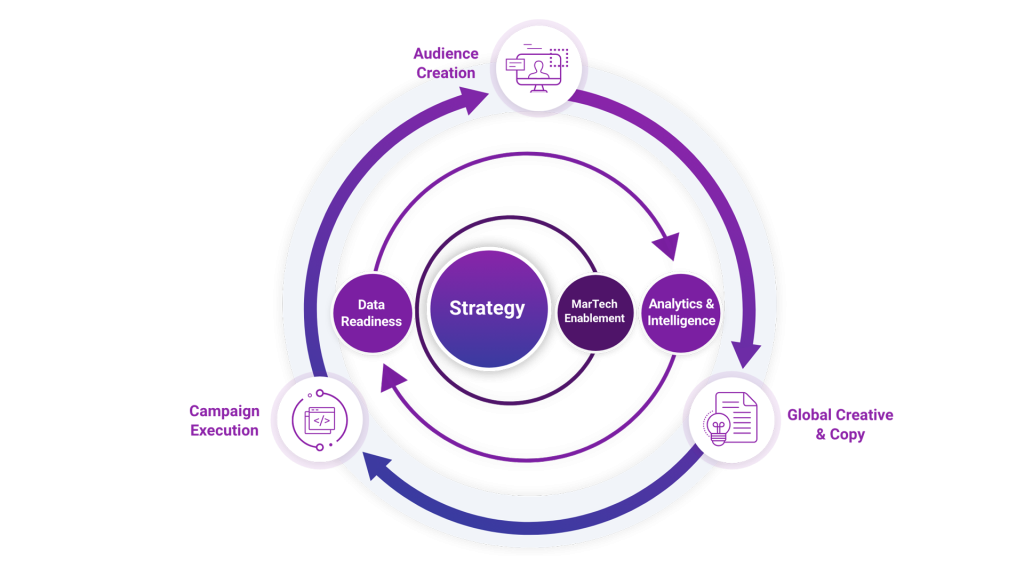An Intelligent Approach to Marketing during a Recession

CEOs are more talking freely about the likelihood of a recession hitting the global economy. It’s quite clear that companies are bracing for one based on their rampant cost cutting. How should they view marketing in a recession? Leaning into data to do smart marketing is key.
Time and again, businesses that cut back on marketing have paid a price down the road when the market turns around and customers are ready to spend again. By scaling back, those businesses have fallen behind those who kept investing into their brands.
Businesses such as General Mills have proven that a company can actually build a stronger brand during a recession by adapting its narrative and tone to suit the needs of its customers.
But you also need to market intelligently. How? By using data more strategically -- specifically first-party data. An intelligent approach to using first-party data will make it possible for a business to do marketing more cost-effectively during a recession. But there’s another huge benefit to a first-party data approach: amid the demise of third-party cookies, a business future-proofs its marketing strategy to provide prospects and customers more relevant, qualified experiences.
A Quick Refresher on First-Party Data
First-party data is the information that customers willingly share with you about themselves.
The primary methods of collecting first-party data are getting customer input via email, tracking purchase and brand interaction data, and using a customer data platform (CDP) to retain customer information. First-party data can tell you a significant amount about your customers’ behaviors, as well as how to generate leads with target demographics.
With first-party data, customers are consenting to the collection of their information by the company in question (and of course companies need to ask for that consent properly lest they incur fines and erosion of consumer trust).
By contrast, companies collect third-party data about people via third-party cookies. By its nature, third-party data is more expensive than first-party data. True, first-party data is not completely free – businesses must invest money and time to collect that data and analyze it. But first-party data does not have to be purchased from a third party as is often the case with third-party data. Moreover, third-party data has always suffered from concerns over its accuracy. Less accurate data means less cost-effective data. In addition, third-party data is becoming even less cost efficient at a time when heightened privacy controls (especially from Apple and Google, as widely reported) are making third-party cookies a thing of the past. This, alone, is a major reason .why businesses are taking a closer look at how they use first-party data.
Why First-Party Data Matters During a Recession
First-party data can help a business during a recession in a number of ways, including:
- Understanding your customers. Consumer behaviors are affected during a recession, and not necessarily in the same way every time. Smart first-party data is crucial to keeping up with changing behaviors so that your campaigns remain relevant and timely. As we saw during the economic uncertainty of 2020, consumer behavior can change on a dime. Fear and doubt can lead to panic buying, for instance. But a recession can affect consumer purchase behavior and lifestyles in more subtle ways, too, an example being shoppers trading down with their purchases. Only by getting information directly from your customers can you know for sure.
- Creating better remarketing strategies. Marketing to existing customers is typically less expensive than acquiring new customers. In fact, acquiring a customer can cost five times more than keeping existing customers. Lowering acquisition costs is always a priority for marketers – and during a downturn, doing so is essential. But marketing to your customer base must be done carefully. A business needs to understand its customers’ preferences in order to serve up more personalized offers and content. Those offers must suggest ideas that are adjacent to the products they’ve already purchased instead of simply duplicating what they’ve already bought. Only a smart approach to collecting first-party data will do that.
- Finding new customers. Granted, it’s more expensive to acquire new customers – but growing the customer base also helps a business come out of a recession stronger. First-party data can help do this. By learning more about its own customers’ preferences and behaviors, a business can find untapped opportunities to find prospects who share those preferences and behaviors. In other words, first-party data is like a real-time focus group consisting of customers. Right now, businesses that sell products on Amazon are doing exactly this through Amazon ad units that capitalize on data that customers share on Amazon.
How to Get Started
First-party data needs to be collected. And processed. And analyzed. How? We recommend that brands start by developing a strategy aligned with your business goals, looking closely at the data that's available, and the channels your brand and customers are using, to determine how each can be leveraged to drive growth and automation.
- Get the right data in place. Having a clean, consistent, and unified view of your customer requires access to the right data sources, such as social media data, website data, customer relationship management (CRM) data, and more.
- Build a strong data foundation.Once you're pulling data from the right sources, it’s time to build a strong data foundation by putting the right systems and processes in place to support your insights-driven initiatives.
- Leverage insights that drive customer experience.From this foundation, you can gather the intelligence necessary to launch targeted messages that get you closer to your customer and power the one-to-one conversations people and brands are looking for.
- Measure and optimize your results.With marketing efforts underway, it's important to measure and optimize the results that help refine your marketing strategy, avoid potential pitfalls, and ultimately drive better business outcomes.
Intelligent tools are essential for making sense of the deluge of data. By investing in a CDP, you enable your team to collect, organize, and analyze data for clearer insights into customer needs and behaviors.
The Value of AI
In addition, artificial intelligence (AI) can help a business manage the myriad moving parts of first-party data faster and more effectively than any human being can. Using AI as part of a data-driven approach to marketing can help a business market more cost effectively by:
- Data-driven insights that inform every decision you make, from strategy and planning to execution and optimization.
- Real-time experimentation that uses technology to test, learn, and iterate quickly to find what works and optimize for results.
- One-to-one personalization that delivers the right message, to the right person, at the right time at scale.
- Omnichannel orchestration that weaves together the best mix of channels and tactics to reach your customers where they are.
The above benefits not only help a company build a better brand during a downturn, they also give a brand a leg up when the downturn ends.
Our own CMO.AI solution is tailor made to deliver these and many more benefits. Our CMO.AI solution helps you discover the data patterns that matter, so you can create relevant experiences for each customer and move the digital needle.

Contact Centific to get started.
